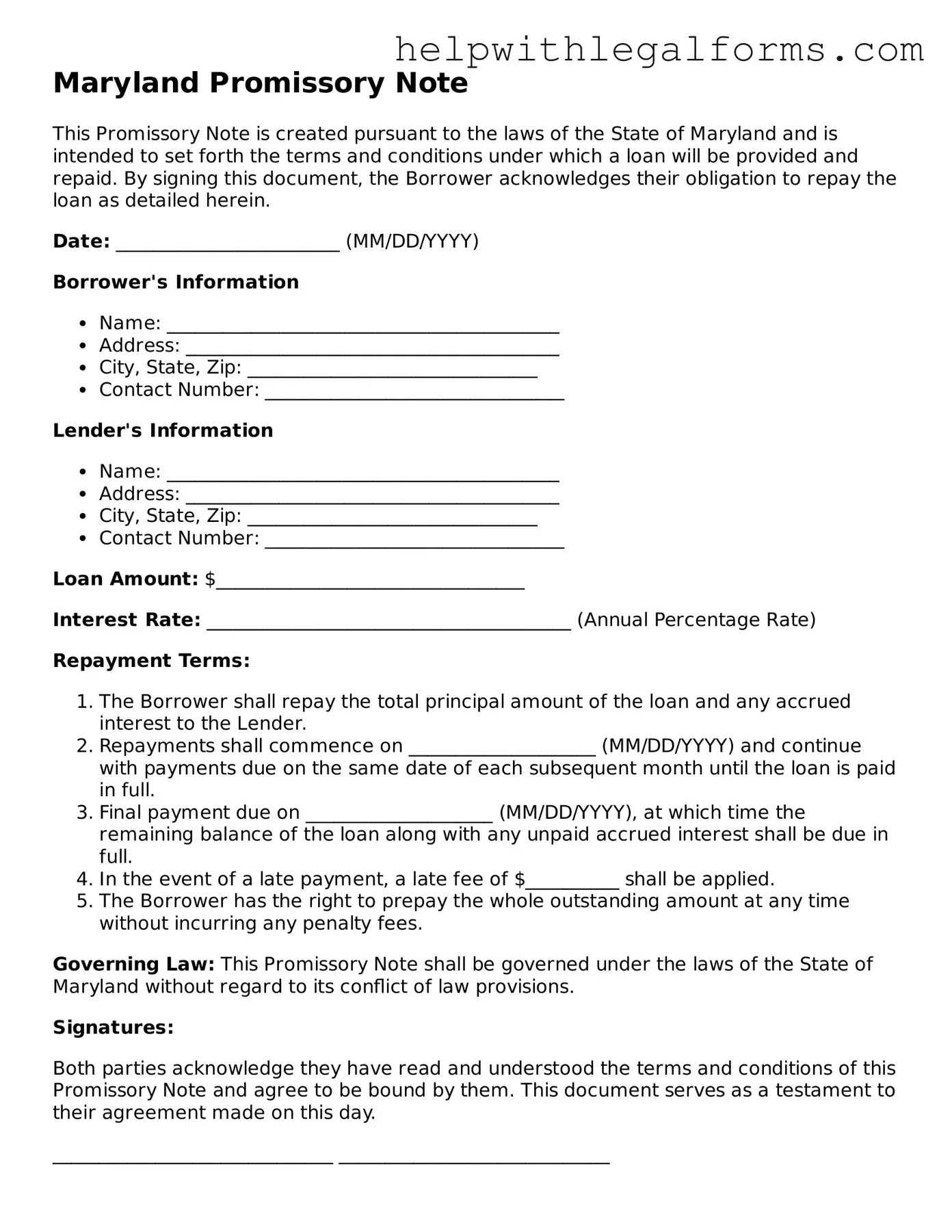Maryland Promissory Note
This Promissory Note is created pursuant to the laws of the State of Maryland and is intended to set forth the terms and conditions under which a loan will be provided and repaid. By signing this document, the Borrower acknowledges their obligation to repay the loan as detailed herein.
Date: ________________________ (MM/DD/YYYY)
Borrower's Information
- Name: __________________________________________
- Address: ________________________________________
- City, State, Zip: _______________________________
- Contact Number: ________________________________
Lender's Information
- Name: __________________________________________
- Address: ________________________________________
- City, State, Zip: _______________________________
- Contact Number: ________________________________
Loan Amount: $_________________________________
Interest Rate: _______________________________________ (Annual Percentage Rate)
Repayment Terms:
- The Borrower shall repay the total principal amount of the loan and any accrued interest to the Lender.
- Repayments shall commence on ____________________ (MM/DD/YYYY) and continue with payments due on the same date of each subsequent month until the loan is paid in full.
- Final payment due on ____________________ (MM/DD/YYYY), at which time the remaining balance of the loan along with any unpaid accrued interest shall be due in full.
- In the event of a late payment, a late fee of $__________ shall be applied.
- The Borrower has the right to prepay the whole outstanding amount at any time without incurring any penalty fees.
Governing Law: This Promissory Note shall be governed under the laws of the State of Maryland without regard to its conflict of law provisions.
Signatures:
Both parties acknowledge they have read and understood the terms and conditions of this Promissory Note and agree to be bound by them. This document serves as a testament to their agreement made on this day.
______________________________ _____________________________
Borrower's Signature Date
______________________________ _____________________________
Lender's Signature Date
